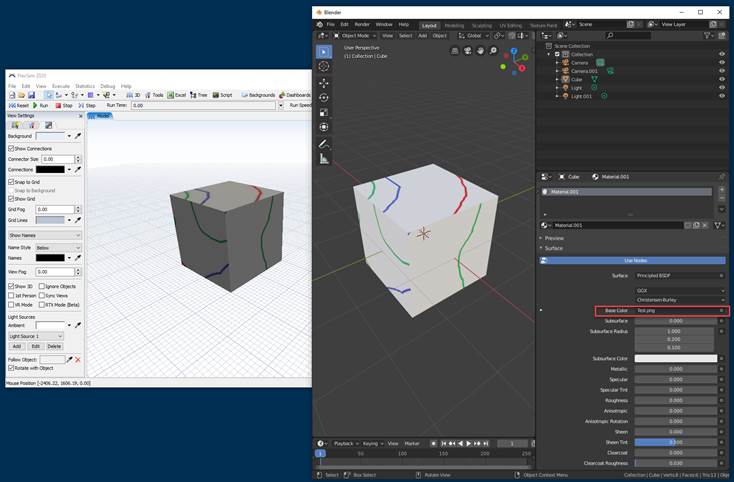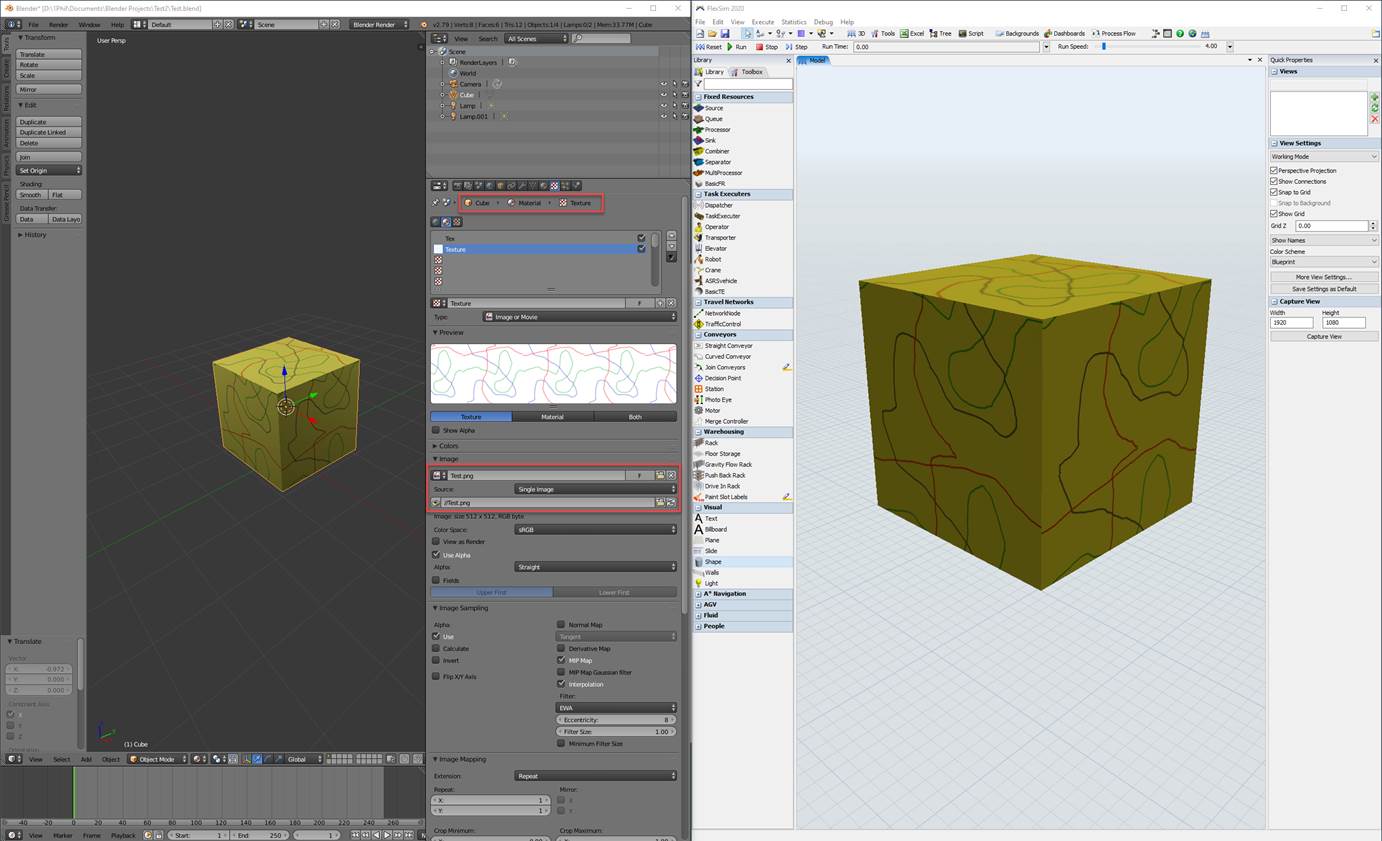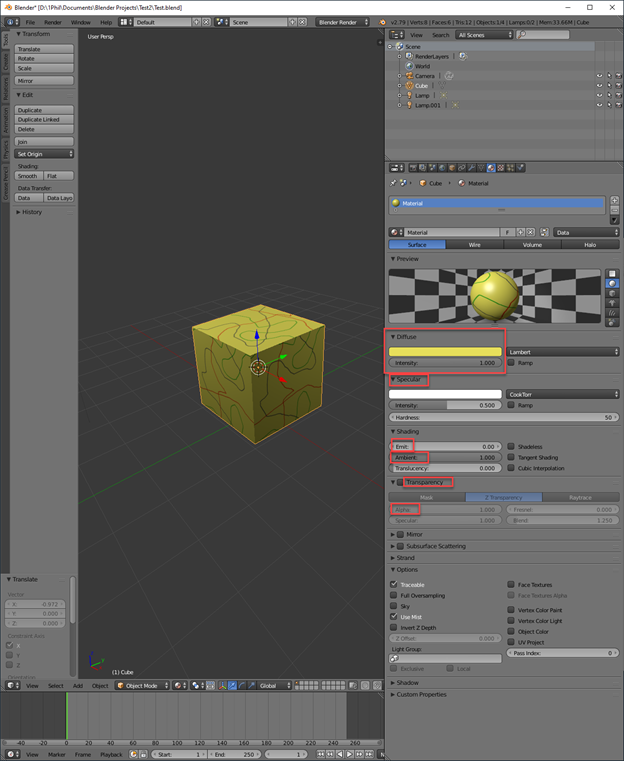Before I used Blender 2.79b and I could import .blend files directly into FlexSim (even if the axes were off by 90 degrees which I had to fix in the Shape Factors).
Recently I've switched to the new version: I created WRCS.blend in Blender 2.81 (by importing an .stl file). When I try to use this shape in FlexSim it doesn't import well. To be precise the dimensions of the object are set to 0, but even when I give the object a non-zero size the shape is not visible.
I assume that this is an issue with the Blender import.






